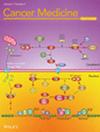A 39-Year Nationwide Study of Uveal Melanoma in Taiwan
Abstract
Purpose
To investigate the incidence, treatment strategies, and survival outcomes of adult patients with uveal melanoma (UM) in Taiwan over a 39-year period.
Design
We conducted a retrospective, nationwide population-based cohort study retrieving data from the Taiwan Cancer Registry and the National Death Registry of Health and Welfare Data Science Center database. By employing the International Classification of Diseases diagnostic codes, we identified patients who were diagnosed with UM between January 1980 and December 2018. We analyzed treatment information, as well as mortality data, to gain a comprehensive understanding of the incidence, patient characteristics, treatment patterns, and survival outcomes.
Results
A total of 314 patients (156 males and 158 females) were diagnosed with UM. The overall incidence rate was 0.36 (range: 0.30–0.42) per million persons, with a mean age at diagnosis of 52 years. In terms of treatment options, enucleation was performed on 122 patients (38.9%), whereas 108 (34.4%) received radiotherapy (RT). The remaining 84 (26.8%) patients underwent alternative treatments. The 5-year overall survival (OS) rate was 58.3%. Pairwise comparisons showed that the OS rates of patients who underwent RT versus surgery were similar. Two factors were associated with favorable OS outcomes: being under 50 years of age (p < 0.001) and being a female (p = 0.04).
Conclusions
Our real-world study encompassing a 39-year timeframe revealed a relatively low incidence of UM within the Taiwanese population. Patients under the age of 50, as well as females, demonstrated more favorable OS outcomes.


 求助内容:
求助内容: 应助结果提醒方式:
应助结果提醒方式:


